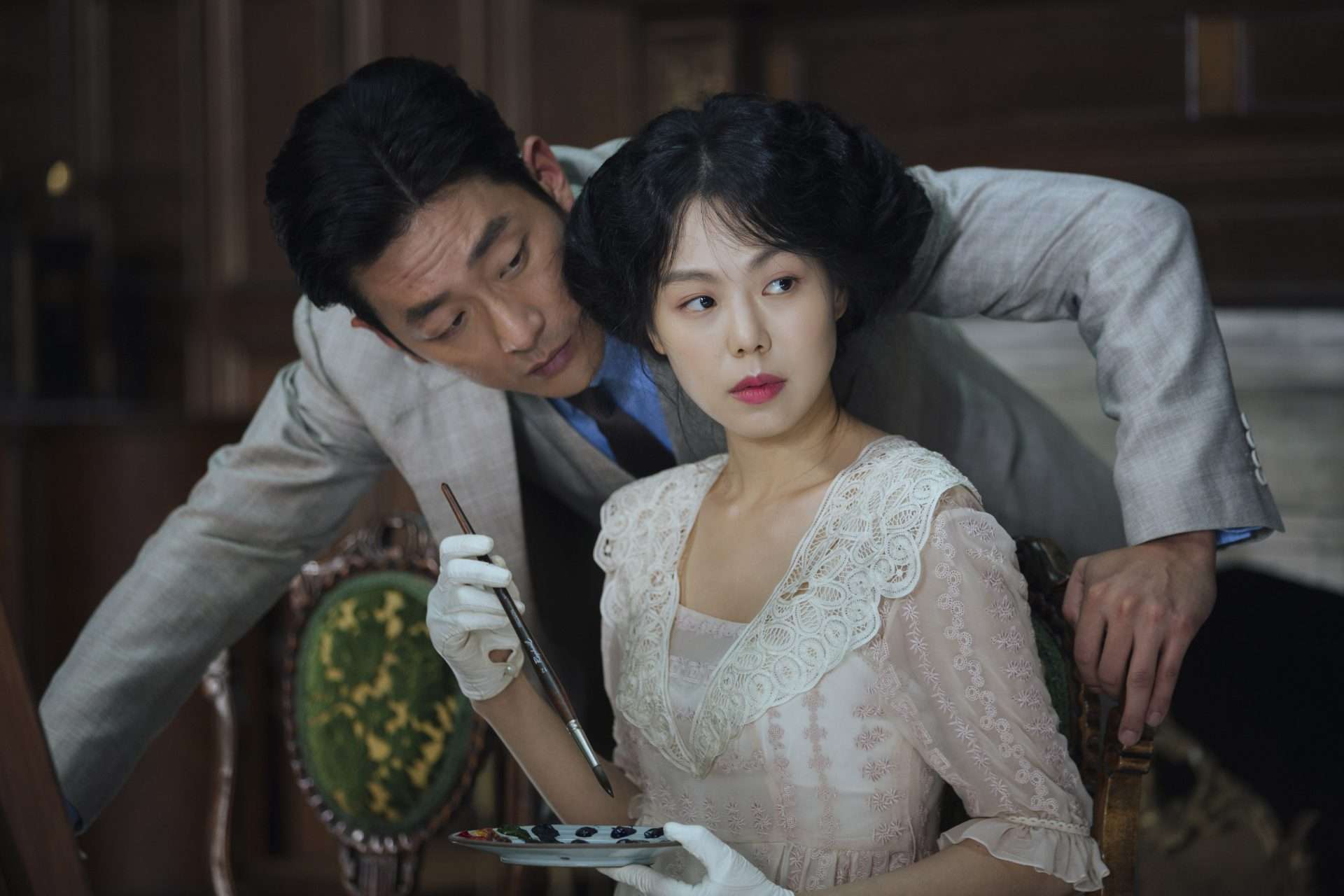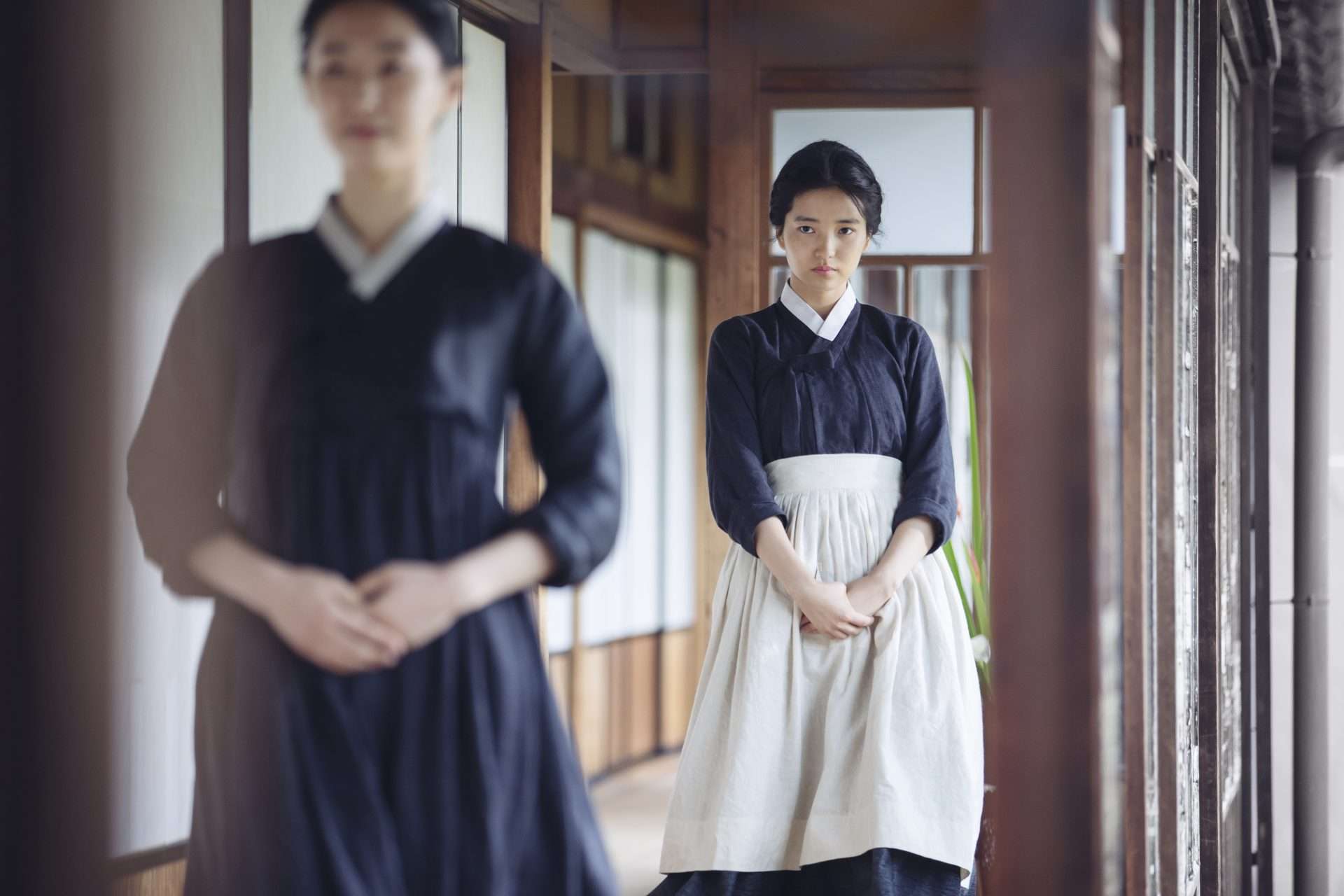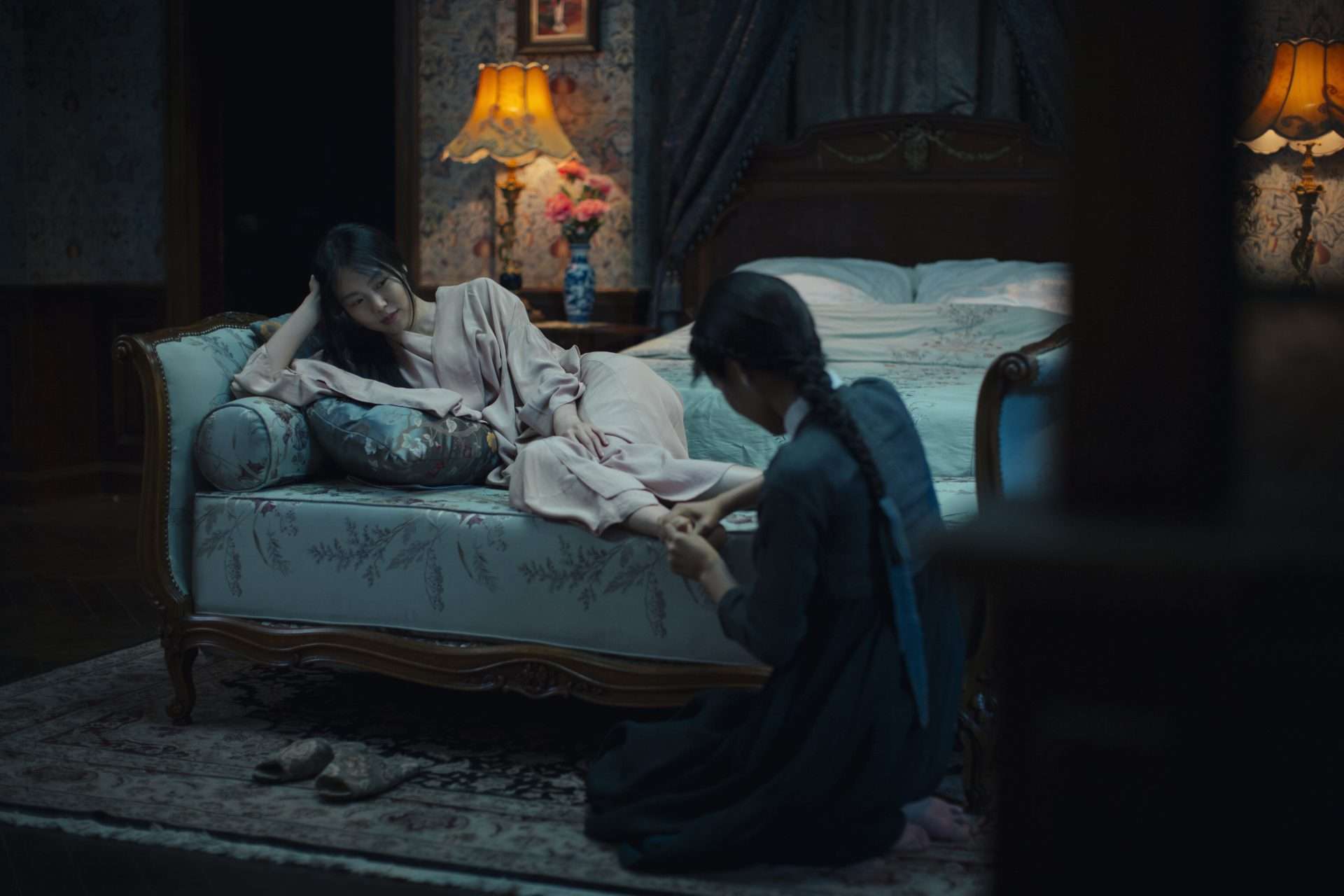When Fingersmith was published in 2002, it was lauded as a gripping historical thriller—rich in companionship, rebellion, and escape, yet firmly rooted in genre conventions. But when Park Chan-wook, a filmmaker renowned for making crime and mystery thrillers, reimagined its Victorian-era tale within the charged backdrop of colonial-era Korea, “The Handmaiden” became something else entirely. More than just an adaptation, it’s a film that transcends comparison—a lush, intoxicating study of desire, power, and submission breaking past its limits.
Beyond its evocative exploration of colonialism’s grip on the human mind, “The Handmaiden” (Original title: Ah-ga-ssi) wields eroticism like few films dare—so sharp and unvarnished in its aestheticism that other artistic depictions of desire seem almost timid in comparison. But at its core, this is a smart, subversive tale of two women outgrowing the petty, calculated power plays of a patriarchal world. Through the lens of a lonely heiress and her quick-witted maid, the film constructs a drama of aching tenderness, giving it breathing space amid the suffocating spaces of lies, deception, and quiet violence.
Yet, for all its sensuality and narrative intrigue, “The Handmaiden” rewards the viewers’ patience. Its mysteries don’t reveal themselves in a single viewing. So here’s an earnest attempt to untangle its sharpest edges—one twist at a time.
The Handmaiden (Ah-ga-ssi, 2016) Plot Summary and Movie Synopsis:
The film opens with a Korean maid named Tamako bidding farewell to her family as she sets off to work as a handmaiden for Lady Hideko, a Japanese heiress. Lady Hideko lives in a grand estate under the strict guardianship of her uncle, Kouzuki, a Korean man who collaborated with the Japanese during the colonization of Korea. Kouzuki is both an avid collector of rare books and an insatiable admirer of wealth, with his manor itself embodying his dual allegiances—one building reflecting English architecture and the other showcasing Japanese design.
Upon Tamako’s arrival, the housekeeper, Mrs. Sasaki, familiarizes her with the mansion’s rigid rules and warns her about Hideko’s fragility, loneliness, and tendency to sleep-talk. Hideko rarely leaves the estate, attending only her uncle’s peculiar reading sessions. Soon, the household is abuzz with the arrival of a suave aristocrat, Count Fujiwara, who shows an interest in Hideko and secretly summons Tamako for a private meeting.
What is Count Fujiwara’s real plan?
In their secret conversation, it is revealed that neither Count Fujiwara nor Tamako are who they claim to be. Fujiwara is, in reality, a Korean conman who has infiltrated the estate with a sinister scheme: he intends to seduce and marry Hideko, then have her committed to an asylum so he can seize her vast inheritance. To execute his plan, he has enlisted the help of an ambitious pickpocket named Sook-hee, who has assumed the false identity of Tamako. Her role is to manipulate Hideko into falling for the Count, subtly pushing her toward submission.
However, the situation grows increasingly complicated as Hideko becomes drawn to Sook-hee instead. While Sook-hee struggles with the conflict between her growing feelings and her duty to deceive, she also grows protective of Hideko, resenting the way Fujiwara forces himself upon her. Despite her efforts to stoke Hideko’s desire for the Count, it is Sook-hee who ultimately ends up in Hideko’s arms. Their passion reaches a climax one fateful night when Hideko, exhausted from another of her uncle’s twisted reading sessions, submits to Sook-hee’s embrace.

With the plan still in motion, Hideko ultimately agrees to elope with Fujiwara, but only on the condition that Tamako accompanies her. The trio escapes to Japan, where the Count and Hideko exchange vows. However, the marriage quickly turns nightmarish, as Fujiwara forces himself on Hideko, further destabilizing her mental state. Leaving a housekeeper behind to spy on the women, he departs briefly, returning only after liquidating Hideko’s inheritance into cash.
Who is really being sent to the asylum?
On the fateful day of the asylum commitment, Sook-hee is shocked to find herself being dragged away instead of Hideko. In a shocking twist, Hideko has switched roles with her, pretending to be the maid while Sook-hee is identified as the Countess. As she is forcibly taken away, Sook-hee, betrayed and enraged, curses Hideko as a “rotten bitch from the very beginning.”
What is the truth behind Hideko’s past?
The film now unveils the harrowing truth about Hideko’s upbringing. Since childhood, she has been subjected to relentless psychological and physical abuse by her uncle, Kouzuki. He forced both her and his wife (Hideko’s aunt) to perform in disturbing literary readings for his depraved male guests. These sessions involved recitations of lurid, erotic passages, sometimes requiring Hideko to demonstrate the scenes using a wooden effigy.
Also Read: The 25 Best Non-English Films of 2016
Her aunt, unable to endure the humiliation and cruelty, eventually took her own life, hanging herself from the cherry blossom tree outside. Kouzuki, devoid of remorse, refused to have the tree cut down. Over the years, Hideko was groomed into becoming the next reader, trapped in her uncle’s grip, performing for his twisted audience. She found solace only in Mrs. Sasaki, the housekeeper, who was also Kouzuki’s abandoned first wife.
Enter Count Fujiwara, whose charisma caught Kouzuki’s attention. Recognizing him as a potential escape route, Hideko secretly allied with him, agreeing to flee the estate. Together, they devised a ruthless plan: they would hire an unsuspecting handmaiden, trick her into believing she was deceiving Hideko, and ultimately sacrifice her by having her institutionalized under a false identity. Sook-hee became their perfect target.
The Handmaiden (Ah-ga-ssi, 2016) Movie Ending Explained:
How do Hideko and Sook-hee turn the tables?
Despite Hideko’s initial deceit, her connection with Sook-hee deepens beyond manipulation. She confesses the truth to Sook-hee, revealing that the real plan all along was to betray her. However, realizing their shared pain, the two women form an alliance against the men who sought to control them.
On the eve of their escape, they ransack Kouzuki’s library, destroying his prized collection of perverse literature. Sook-hee writes a letter to her criminal associates, seeking their aid in executing a counterplan. As they proceed with the original scheme, they deceive Fujiwara into believing that everything is going according to his plot. However, when Sook-hee is taken to the asylum, her allies, disguised as asylum workers, rescue her.

Meanwhile, believing himself victorious, Fujiwara proposes a real marriage to Hideko. He boasts of forging a new identity for her—Nam Sook-hee—assuming that the real Sook-hee will soon perish in the madhouse. But Hideko has no intention of being controlled any longer. On their wedding night, she secretly laces Fujiwara’s drink with the poisoned potion he had once gifted her. As he collapses, she escapes, leaving him unconscious.
What happens to Count Fujiwara and Kouzuki?
When Fujiwara regains consciousness, he finds himself at the mercy of Kouzuki’s henchmen. The Count is taken back to the manor, where Kouzuki, now seething with rage, demands details of his niece’s sexual experiences. Fujiwara, already aware that his fate is sealed, mockingly recounts their wedding night: Hideko had merely undressed, masturbated under the covers, and then used a sharp object to make herself bleed.
Enraged yet fascinated, Kouzuki continues his gruesome interrogation. Fujiwara, refusing to endure prolonged torture, requests one final cigarette. Unbeknownst to Kouzuki, he has laced the cigarette with a lethal poison. As the toxic fumes fill the air, he and Kouzuki succumb to death together, ending their twisted power games in mutual destruction.
Do Hideko and Sook-hee escape together?
Dressed as a man, Hideko flees to the port with Sook-hee, knowing that Kouzuki has banned two women from traveling together. Their disguises allow them to board a ship undetected. As the vessel sails under the moonlit sky, Hideko and Sook-hee reclaim their agency, celebrating their freedom with an intimate moment. Using the small silver bells that once symbolized Hideko’s captivity, they turn bondage into pleasure, indulging in a newfound love that is finally theirs to own. With the men who sought to exploit them dead and their pasts left behind, Hideko and Sook-hee sail toward an uncertain but liberated future.
The Handmaiden (Ah-ga-ssi, 2016) Movie Themes Analysed
Reclamation of Female Sexuality
Even before Hideko and Sook-hee surrender to desire in its fullest form, “The Handmaiden” signals its intent: its women will reclaim themselves. Liberation does not arrive in an instant—it stirs in the quiet aftermath of exhaustion, where subjugation makes way for self-possession.
Also Read: The 50 Best Films Of 2016
When Sook-hee first enters the manor as Tamako, the space around her feels almost cavernous—whimsical in its ornate grandeur, yet suffocating in its rules. But the moment the instructions end, she begins to carve a place for herself. Her feigned naivete is not a limitation but a tool—one that lets her navigate this world under the guise of subservience, all while steadily reclaiming agency.
Similarly, by the time we transition from the first act into the second, Hideko is no longer the fragile, docile woman we once believed her to be. What makes this transformation remarkable is the film’s refusal to frame her solely as a victim or a seductress—it acknowledges both the rage and the cunning required to survive. On one hand, we are meant to loathe her for manipulating the circumstances. On the other, we can’t help but be in awe of how she has fashioned power from torment.

Sexuality, here, is not just an expression of pleasure—it is a weapon, a passage, a rebirth. Nowhere is this clearer than in the pivotal love scene between Hideko and Sook-hee, shown twice in a semi-Rashomon style. Each iteration offers a distinct perspective, revealing new dimensions of their intimacy. Yet in both, desire is interwoven with something even greater—a quiet but profound coming-of-age, where sexuality becomes a form of self-realization.
The Intricate Relationship Between Deception and Storytelling
At its core, “The Handmaiden” is about the artistry of deception—how lies, when skillfully told, don’t just manipulate but carve out humanity itself. Its humor and homoerotic thrill feel less like narrative flourishes and more like natural rites of passage for its characters, all of whom must deceive in order to break free.
This theme is embedded not just in the story but in the very fabric of the film’s aesthetic. “The Handmaiden” is set during Japan’s colonial rule over Korea (1910–1945), yet the manor and its reading room seem to belong to a far older world. This deliberate anachronism does more than highlight the grotesque fetishism lurking within those walls—it makes the moment of Hideko’s escape all the more radical. When she steps out in modern, liberating attire, walking toward Sook-hee, it is not just a shift in circumstance but a rupture in history itself.
The film structures its deception meticulously, stacking layers of withheld information so that the twists don’t simply unfold on-screen—they seep into the bones of the audience. Every misdirection, every sleight of hand, isn’t just a narrative trick but a way of ensuring that truth, when it finally emerges, arrives like an eruption.
Voyeurism and Patriarchy
There is a fine line between eroticism and voyeurism, especially in art. Park Chan-wook walks this line deliberately, constructing the film’s eroticism with a paradoxical touch—lurid yet delicate, provocative yet resistant to easy titillation. The sex in “The Handmaiden” is never neutral; it is either oppressive and gutless (as seen in the reading sessions) or intimate and untethered from the male gaze (as seen in Hideko and Sook-hee’s private world).
Patriarchy, by contrast, is framed as something grotesquely casual at first—almost a dark comedy of shadows. But as we peel back the layers, its horror becomes more explicit. Kouzuki, with his fetishistic cruelty, initially seems like a caricature of male dominance, but the more we see of his methods, the more unnerving he becomes. The violence he inflicts is not just perverse—it is systemic, spiraling outward from the darkest corners of his psyche into the very foundations of the world he has built.
And then there’s the Count—seemingly more bearable in comparison, yet ultimately just as insidious. His entire scheme is underpinned by a grotesque delusion—that violation can be mistaken for pleasure. He believes in rape as something that, under the right circumstances, might even be enjoyed. In that sense, he is just another distorted reflection of the patriarchal horror he claims to outwit. But “The Handmaiden” does not allow these men to survive. Their fates are sealed not just as comeuppance but as necessity—because a world that values true freedom has no place for them.




![Passing [2021] Netflix Review: An Enthralling Minuscule Masterpiece that Establishes Rebecca Hall as a Strong Storyteller](https://79468c92.delivery.rocketcdn.me/wp-content/uploads/2021/11/usdramatic_Passing_still1-768x431.jpeg)


